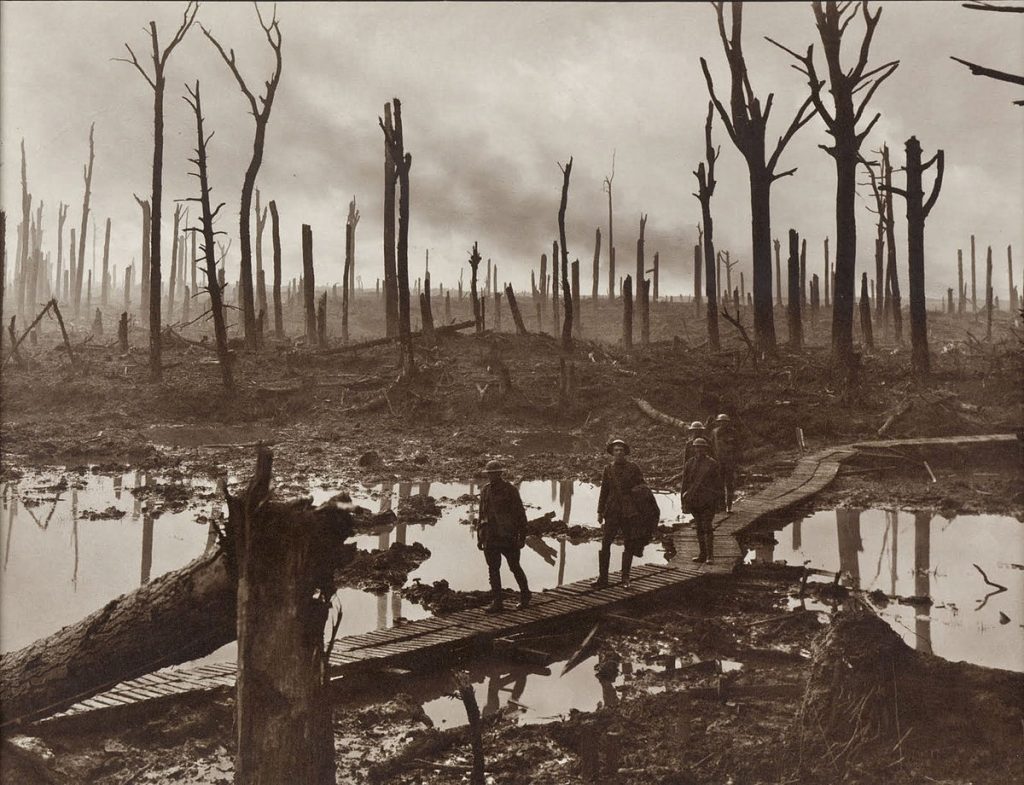 Passchendaele
Passchendaele
by Ralph Berry
I happened to be reading Siegfried Sassoon’s MEMOIRS OF AN INFANTRY OFFICER when I came across this arresting phrase, ‘crushing Prussian militarism’. Sassoon’s colonel had been urging him to give up his campaign to stop the War. No kind of standard-issue pacifist, Sassoon–who had already won the M.C.– continued his campaign and had his statement read out by a friendly Labour MP in the Commons, containing this: ‘I believe that the war is being deliberately prolonged by those who have the power to end it.’ The authorities took no violent action against Sassoon and arranged for him to be treated for shell shock. He went back to the front.
For ‘Prussian militarism’, read ‘Putin’s war’ with comparable embellishments. The same forces are at work. But this is not a matter of right and wrong, however the media present the war in that light.
It is the nature of the war itself, and its obdurate self-continuation. The headline in the TELEGRAPH is ‘Welcome to Bakhmut–the new Passchendaele’ with a photo of a desolate landscape where all trees, stripped down by shelling, are ‘bare ruined choirs where late the sweet birds sang’. We are back to 1917 in more ways than one.
This is an artillery war, as it was then. The Machine Gun Corps Memorial in Hyde Park has this inscription: ‘Saul hath slain his thousands, and David his tens of thousands’ (1 Samuel 18.7) Even so, field artillery was the great killer of WW1, accounting for 46% of all casualties. The Russians today are operating on the same well-tested principle; when Kherson was evacuated, to great acclaim in the media, the Russian artillery were simply given a new target area. The locals were better off under Russian occupation.
Artillery is now augmented by drones, which serve the same purpose.
They cost nothing but money to the attackers, and this can always be arranged. Stanley Baldwin was much quoted for saying, in 1932, ‘the bomber will always get through’, and this is essentially true of exploding drones and missiles. However sophisticated the defence systems, the swarm will always find targets. The media, with characteristic misuse of language, speak of ‘kamikazi drones’, a contradiction in terms. The original planes had a pilot. The future must belong to drones, with their ever-increasing power of bombardment and destruction of infrastructure.
Little of this appears to have got through to the warring powers in Ukraine. It is evident that some kind of peace must come to pass; the Russians will hold some of their gains, the Ukrainians will give up some of their land. There must be negotiation. From early indications it appears that the Russians are willing to talk, while the Ukrainians maintain their absolutist stance. They recall the fate of the peace talk of 1916.
Here however the comparison with WW1 breaks down. When Lord Lansdowne floated his proposal for a managed peace in the Times (December 1916) he ran into great opposition. The public saw it as a betrayal of their huge losses. Lloyd George looked at the matter more coolly, and concluded that there was no real chance of peace. For one thing, the Germans had made great advances in Northern France after launching the war, and could not withdraw from these possessions without admitting that the war had been an enormous waste of blood and treasure, a blunder of historic and incalculable magnitude. ‘For Bethmann demanded a peace treaty based on German victories, and Lloyd George was pledged to reverse them.’. So the war had to go on till victory for one side or another. As late as March 1918 it looked like Germany, but the failure of the Kaiserschlacht settled the outcome of the war.
The Russo-Ukrainian war cannot be decided by victory. It is not a world war, and the world cannot afford its indefinite continuation.
The long border–one could walk a few metres across it, but for the barbed wire–means that only a cast-iron, internationally-guaranteed settlement will work, which is what Henry Kissinger pointed to. It cannot seriously be maintained that a sullen, vengeful Russia perched eternally on Ukraine’s shoulder holds any hope of peace. And yet this is what the firebrands of the press are advocating, including such apostles of war as Lord Charles Moore of the Telegraph.
Finally, a new dimension to the tragedy is supplied by Mark Galeotti (Spectator, 5 November). ‘The war in Ukraine has become a testing ground for new technologies’. It is an opportunity to explore the effectiveness of devices from countries that include Turkey, Latvia and Iran–that we know of–besides the US and UK. The sales value of armaments adds enormously to their deployment, as does their competitive pricing. Meantime the Ukraine leadership seems content for their ravaged country to become a full-time testing ground for novel inventions, a giant Salisbury Plain. Britain remains steadfastly determined to fight to the last Ukrainian.
- Like
- Digg
- Del
- Tumblr
- VKontakte
- Buffer
- Love This
- Odnoklassniki
- Meneame
- Blogger
- Amazon
- Yahoo Mail
- Gmail
- AOL
- Newsvine
- HackerNews
- Evernote
- MySpace
- Mail.ru
- Viadeo
- Line
- Comments
- Yummly
- SMS
- Viber
- Telegram
- Subscribe
- Skype
- Facebook Messenger
- Kakao
- LiveJournal
- Yammer
- Edgar
- Fintel
- Mix
- Instapaper
- Copy Link







One Response
“Britain remains steadfastly determined to fight to the last Ukrainian.”
and Joe Biden, the entire Democrat Party and all RINO’s to the last American Dollar. This bunch is totally in the pay of and controlled by Communist China because their major donors like Apple, Big Pharma and Silicon Valley prefer the Chicom’s to their own country. They are all traitors.